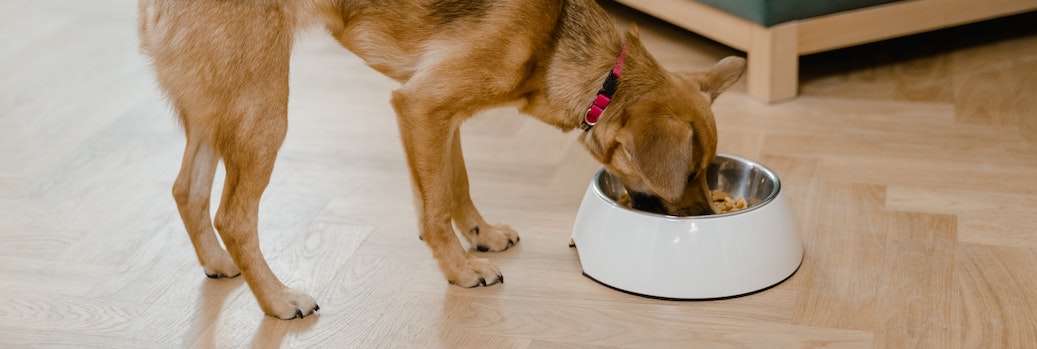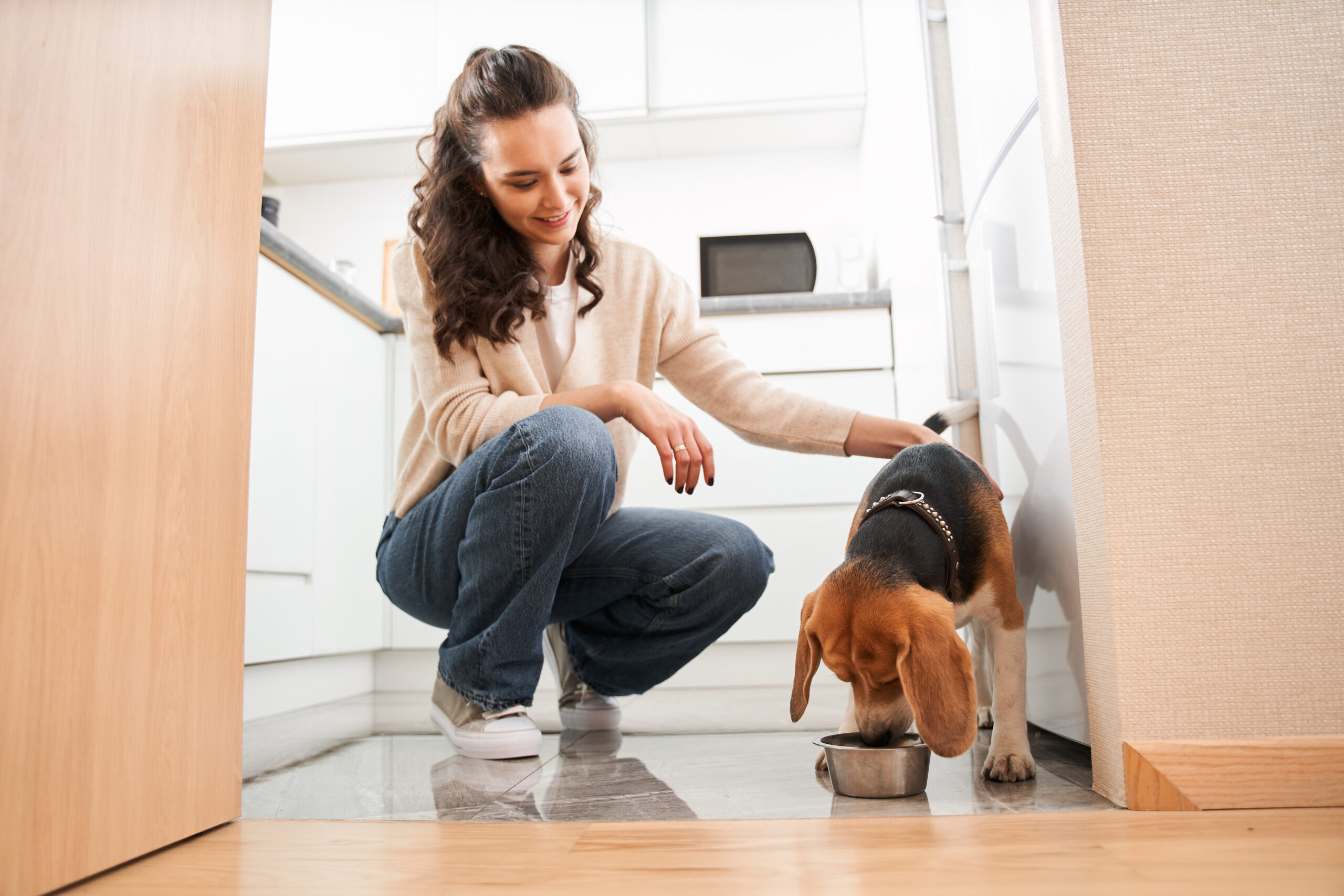Food Aggression in Dogs: What You Need to Know
Help your dog feel secure, and keep your family safe.

Help your dog feel secure, and keep your family safe.

If your dog gets possessive and aggressive at mealtime, you might be dealing with a case of food aggression. While food aggression is common in dogs, it’s important to address the behavior to help keep all of the humans and pets in your home safe.
If you notice signs of food aggression in your dog, you aren’t alone. Food aggression in dogs is surprisingly common. One study found evidence of food aggression in 20% of dogs observed living in a shelter.
Fortunately, there are many ways to manage and reduce food aggression, and to help your dog feel more secure in your home.
Food aggression, also called food guarding or resource guarding, is a behavioral response in dogs. In pack environments, or when competing with littermates, dogs have to protect their food from others, and they do that by guarding their food and acting aggressively toward other dogs that may be perceived as trying to steal it.
While your dog doesn’t need to guard their food in your home, that guarding instinct is still strong. Some dogs may act aggressively when they feel that their food (or other objects, like toys) are being threatened, and they may show their teeth, raise their hackles, growl, and even bite to protect those items.
Dogs are more likely to demonstrate aggression over foods they think are particularly tasty, also known as “high value” foods, like canned food or a special treat, as compared to something a little more boring like kibble.
Food aggression in dogs can range from mild to severe. In a mild case, your dog may show aggressive body language like showing their teeth or growling when you approach or touch them while they have a food item they want to protect. In severe cases, your dog might lunge, snarl, and bite at you when you approach or touch them while they have that food object. As you can imagine, unmanaged food aggression can become very dangerous for your family members, especially kids.
While food aggression is rooted in your dog’s instincts, there are several potential reasons why your dog might develop this guarding behavior. Puppies can learn food aggression if they have to compete with littermates for their food. Trauma, like physical abuse or fighting with other dogs can also cause older dogs to develop the behavior.
Some breeds are naturally more dominant than others, and breeds with strong guarding instincts may be more likely to develop food aggressive behavior. These breeds include: Beagles, Cocker Spaniels, German Shepherds, Rottweilers, and English Springer Spaniels. Keep in mind that not all dogs that belong to these breeds will demonstrate food aggression, and that any breed has the potential to demonstrate resource-guarding behaviors.
Food aggression, particularly milder cases, are often treatable. In addition to implementing appropriate treatment and training techniques for your dog, you will need to take some steps to help manage your dog’s food aggression.
Managing your dog’s food aggression starts with creating a safe environment at home.
If you have visitors over, remove all food from the area that they’re in while your dog is in the same room. When it’s time to feed your dog, put them in a room by themselves and make sure that your visitors understand that they need to stay out of the room until your dog has finished eating.
When you take your food-aggressive dog out in public, avoid giving them treats or food. Plan ahead to make sure you have a safe area to feed your dog, whether that means feeding them in the car, in a hotel room, or in another enclosed space.
You can use the specific training techniques described below to reduce or stop food aggression. The techniques focus on desensitization and counterconditioning your dog, so they become more comfortable with others being nearby when they eat.
Note: If your dog is displaying food aggression to the extent that you find it is dangerous for you or your family members, please consult a behaviorist before attempting any training yourself. Trying these techniques with a highly reactive dog could be dangerous.

Reducing food aggression can be challenging, especially if your dog’s case is severe.
If you have young children in the house, are handling a tricky situation like introducing a new puppy to your dog, or find that you aren’t able to effectively and safely train your dog yourself, then it’s time to get help. Reach out to a professional dog trainer, veterinary behaviorist, or animal behaviorist who can guide you through this process.
If you sign your dog up for Lemonade Pet insurance for dogs before they start showing signs of food aggression, and opt in to our behavioral conditions add-on before they start acting out, this coverage could help cover the costs of vet-recommended therapy or medication for behavioral issues like separation anxiety, extreme territorial behavior, and resource guarding.
Food aggressive dogs may be acting out of instinct, but their behavior can be dangerous for humans and other pets in the home. If you notice signs of food aggression in your dog, it’s important to immediately take steps to keep your family safe, and then to spend time training your dog.
Don’t hesitate to reach out for professional help from a behaviorist and vet to help identify the strategies that will be most helpful for your dog’s special needs.
Please note: Lemonade articles and other editorial content are meant for educational purposes only, and should not be relied upon instead of professional legal, insurance or financial advice. The content of these educational articles does not alter the terms, conditions, exclusions, or limitations of policies issued by Lemonade, which differ according to your state of residence. While we regularly review previously published content to ensure it is accurate and up-to-date, there may be instances in which legal conditions or policy details have changed since publication. Any hypothetical examples used in Lemonade editorial content are purely expositional. Hypothetical examples do not alter or bind Lemonade to any application of your insurance policy to the particular facts and circumstances of any actual claim.